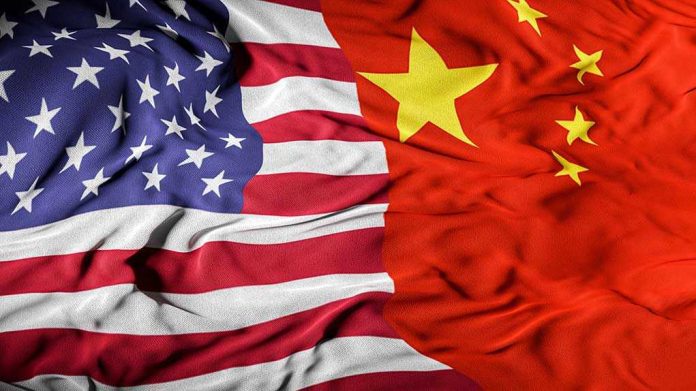
China’s stealthy expansion across Latin America is threatening America’s influence and security while the media and past leaders remain largely silent.
Story Snapshot
- China has entrenched itself in Latin America with massive investments, military exchanges, and surveillance technology, directly undermining U.S. strategic interests.
- Key infrastructure projects—often with dual military and civilian uses—are spreading across the region, raising alarms about future security risks.
- Huawei’s surveillance networks and Chinese-operated ports empower authoritarian regimes and erode privacy, with limited transparency on long-term intentions.
- Despite these mounting threats, U.S. public discourse remains quiet, exposing a dangerous gap in national awareness and preparedness.
China’s Entrenchment in Latin America: A Wake-Up Call
Since the early 2000s, China has methodically expanded its economic and political presence in Latin America, surpassing the U.S. as South America’s largest trading partner. Through the Belt and Road Initiative and a flurry of multi-billion dollar infrastructure deals, Chinese state-owned enterprises have gained control over key ports, highways, and even space-tracking facilities. These projects, cloaked under the guise of development, often have dual-use capabilities with serious implications for military mobility and intelligence gathering. Local governments, desperate for investment, have welcomed these deals, even as their terms remain shrouded in secrecy.
China’s strategy doesn’t stop at infrastructure. The regime has cultivated robust military and law enforcement ties with at least 19 Latin American countries. Since 2022, there have been more than one hundred military exchanges, joint training sessions, and expanded defense attaché appointments. In May 2025, Beijing hosted a major summit, announcing a $9 billion credit line to further cement its regional influence. This wave of engagement is designed to sidestep U.S. oversight and foster dependency on Chinese technology and resources among America’s neighbors.
Surveillance, Sovereignty, and the Erosion of Liberty
A key pillar of China’s influence campaign is the deployment of Huawei’s “Safe City” surveillance systems, now operational in over thirty-five Latin American municipalities. These networks boast advanced facial recognition and real-time data sharing, providing authoritarian governments with unprecedented tools to monitor their citizens. The potential for abuse is high—especially in countries with weak democratic institutions. As China exports its model of digital authoritarianism, privacy and civil liberties in the region are increasingly at risk. Experts warn that such technology could easily be repurposed for intelligence operations against U.S. interests or to suppress political opposition.
Beyond surveillance, China’s law enforcement partnerships blur the line between civilian and military functions. The Global Security Initiative, launched in 2022, rebrands cooperation as “public security,” sidestepping traditional defense boundaries. This ambiguity allows Beijing to operate with minimal scrutiny, embedding its technology and advisors within sensitive sectors. For the United States, whose own border security and intelligence depend on regional stability, this shift represents a direct challenge to sovereignty and constitutional values, especially when American allies are pressured to adopt Chinese systems.
Political Fallout and the Battle for Influence
China’s growing foothold in Latin America carries profound political consequences. By providing investment and political cover to regimes in Venezuela, Cuba, and beyond, Beijing undermines efforts to promote democracy and the rule of law. Some analysts describe China as “an incubator of populism,” using economic incentives to prop up governments aligned with its interests. This environment fosters corruption and weakens U.S. leverage, making it harder to advance policies that defend freedom and human rights across the hemisphere.
American policymakers now face a stark reality: decades of globalist neglect have allowed a rival superpower to plant deep roots in our own backyard. As China’s influence grows, so too does the risk that critical infrastructure—ports, data centers, and telecom networks—could be weaponized in the event of conflict or diplomatic crisis. The erosion of U.S. influence isn’t just an abstract concern; it has immediate implications for jobs, security, and the constitutional principles that define our national identity.
China Is Making a Big Move In Our Own Backyard — But No One Is Talking About It https://t.co/SlZd3PtjZF
— Fearless45 (@Fearless45Trump) October 22, 2025
Despite bipartisan warnings from military and intelligence experts, public discussion in the United States remains muted. Many in the mainstream media downplay or ignore the threat, leaving patriotic Americans frustrated and anxious about the future. This lack of transparency serves only to embolden those who seek to undermine our nation’s security and values. Now, with new leadership in Washington, there is an urgent need to shine a light on these developments and restore a foreign policy that puts American interests—and constitutional principles—first.
Sources:
China’s Trojan Horse Rolls Through Latin America
China’s Influence in Latin America: Security, Energy, and the BRI
The Impact of China on U.S. Interests in Latin America
Beijing’s Military Diplomacy Is Making Major Gains
US-China Competition in Latin America
China’s Influence in Latin America: 2025 Outlook
China Rejects US Accusations of Incursion in Latin America







